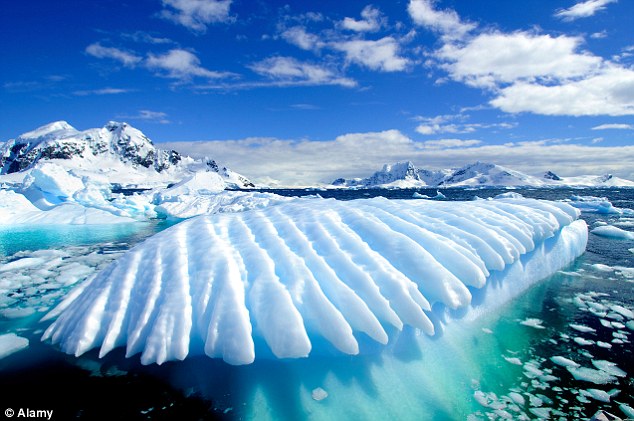-
Tips for becoming a good boxer - November 6, 2020
-
7 expert tips for making your hens night a memorable one - November 6, 2020
-
5 reasons to host your Christmas party on a cruise boat - November 6, 2020
-
What to do when you’re charged with a crime - November 6, 2020
-
Should you get one or multiple dogs? Here’s all you need to know - November 3, 2020
-
A Guide: How to Build Your Very Own Magic Mirror - February 14, 2019
-
Our Top Inspirational Baseball Stars - November 24, 2018
-
Five Tech Tools That Will Help You Turn Your Blog into a Business - November 24, 2018
-
How to Indulge on Vacation without Expanding Your Waist - November 9, 2018
-
5 Strategies for Businesses to Appeal to Today’s Increasingly Mobile-Crazed Customers - November 9, 2018
Sea Levels Have Risen 20 Ft With Only Slight Warming
Even if governments across the globe somehow manage to overcome their intractable differences over how to deal with climate change, and succeed in the near-impossible task of limiting global warming to below 2 degrees Celsius (3.6 degrees Fahrenheit) above the pre-industrial levels, it may already be too late to prevent a drastic rise in global sea levels.
Advertisement
‘Modern atmospheric carbon dioxide levels are today equivalent to those about three million years ago, when sea level was at least six meters higher because the ice sheets were greatly reduced.
The numbers suggest climatic conditions similar to today’s precipitated a dramatic rise in sea levels – 20 to 40 feet higher than current levels – 400,000 years ago and then again 125,000 years ago.
The megasharks aren’t coming back but those sea levels could be no matter what happens in December’s climate summit in Paris.
The study examined past changes and laid out a framework for using them to refine our understanding of what the future holds for coastal communities.
In particular, they consider evidence of ancient sea level and ice sheet reconstructions in various models and review the state of knowledge of the magnitudes, rates and sources of sea-level rise during several of the most prominent interglacial peaks of the last 3 million years. It would also threaten the world’s coastal nations and megacities. That rise has helped boost the surge and flooding damage from storms like Sandy and Typhoon Haiyan, and dramatically increased the occurrence of everyday flooding during high tide in cities from Baltimore to Honolulu.
A recent report released by the Intergovernmental Panel for Climate Control or IPCC indicates that if the emissions remain on the same trend, the seas levels would continue rising another 39 inches by the end of the century.
Because they show that this threshold is similar to observed temperatures in the past, they add, “improved estimates of Greenland ice sheet loss for a given local or global temperature increase during past warm periods will thus provide a critical constraint on this threshold”. “We could be talking many centuries to a few millennia to see the full impact of melting ice sheets”. The current rate of warming could have them dancing a different routine forcing ice sheets to accommodate by melting, and sea levels in turn to rise. Its melt and contribution to sea level rise have increased over the past decade and scientists project that it will play an increasingly larger role in raising the oceans. “Accurate estimates of past sea-level variability provide a context for such projections”, said Horton.
“We’re going to reach temperatures we had in the past periods in the next couple decades”.
Six meters (or about 20 feet) of sea level rise does not sound like a lot.
“One of the most burning questions for policy makers is how fast sea levels will rise”, she told CBS News. The process isn’t linear.
Advertisement
‘Studies have shown that both the Greenland and Antarctic ice sheets contributed significantly to this sea level rise above modern levels, ‘ said Anders Carlson, an Oregon State University glacial geologist and paleoclimatologist, and co-author on the study.




























